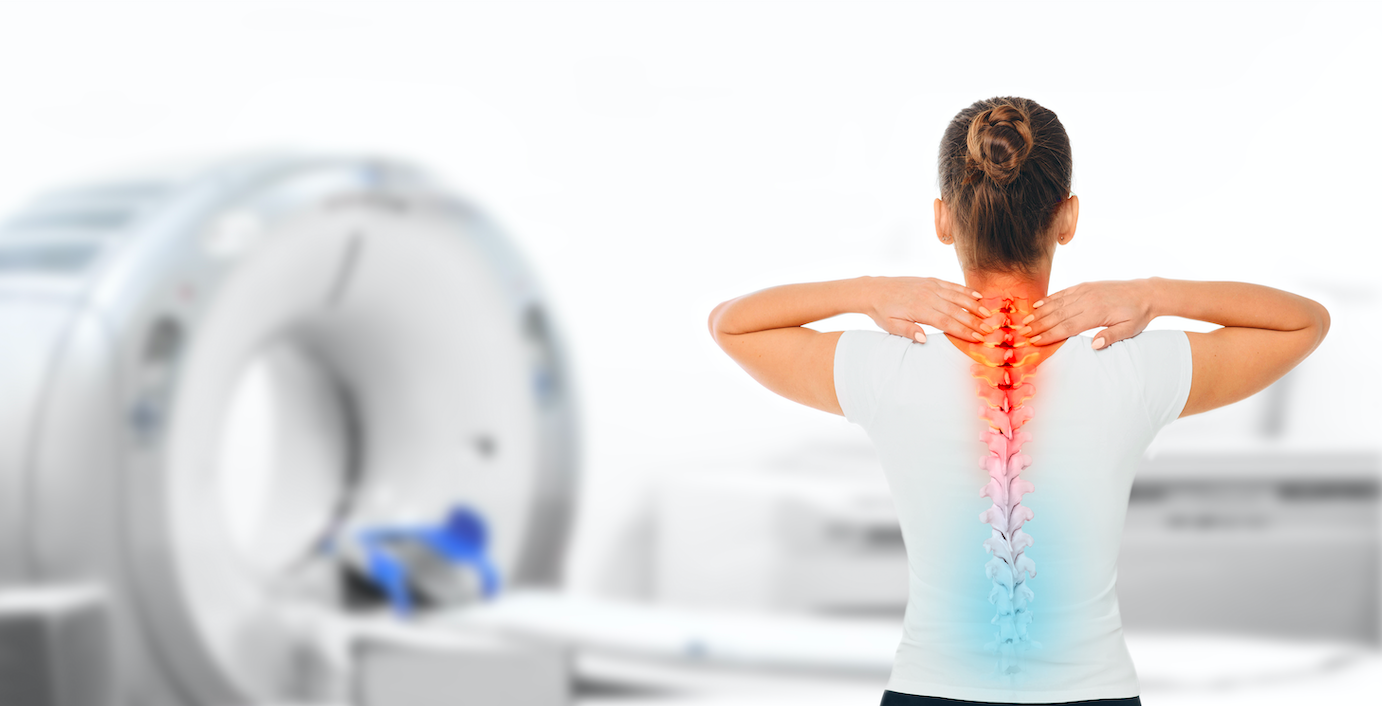News
Myofascial Pain Syndrome as a Common Cause of Upper Back Issues

The spine is one of the biggest problem areas of the body. Pain occurs frequently from the lower back up through the upper spine, neck, and shoulders, often leading to some degree of impairment in the process. In the middle and upper regions of the spine, there are several issues that may be responsible for pain. A condition called myofascial pain syndrome is a common problem in these areas and the subject of this post.
Fascia is a thin, connective tissue that surrounds and connects every muscle in the body. The fasciae—plural of fascia—hold muscles together and allows them to stretch and contract against one another smoothly, without creating any friction that can damage the muscles. This explains the root word “fascia” in myofascial pain syndrome, whereas “myo” refers to muscles the muscles that these fasciae connect.
Myofascial pain involves triggers points, which are areas of tenderness and stiffness within muscles and fasciae that reduce range of motion. These trigger points are essentially muscle fibers that are stuck in contraction, which causes the muscle(s) to tighten and eventually prevents blood from flowing to the area. Trigger points feel like small bumps or knots when touched, and when enough of these occur in a certain area, the result is myofascial pain.
Below, we provide answers to some of the most commonly asked questions about myofascial pain syndrome to help you better understand what it is and how to identify it.
Q: How common is myofascial pain syndrome?
A: It is estimated that myofascial pain affects approximately 44 million Americans, and according to the Cleveland Clinic, about 85% of people will experience it at some point in their lifetime. Middle-aged women who are not physically active appear to have the highest risk for myofascial pain syndrome.
Q: What other terms are commonly used to describe this condition?
A: Myofascial pain syndrome is also referred to as simply myofascial pain, neck strain, upper trapezius pain, rhomboid strain, thoracic strain, or myofascial trigger points.
Q: What muscles are usually involved?
A: Myofascial pain syndrome can affect any muscle in the body, but it is most common in the muscles of the upper back, shoulders, and neck. Notable muscles in this region include the following:
- Trapezius: the trapezius is a large, broad muscle shaped like a triangle that extends from the base of the skull to the middle of the back; it helps give you the ability to tilt and turn your head and neck, shrug and stabilize your shoulders, and twist your arms; the upper trapezius is one of the most common sites for myofascial pain because it takes on a significant amount of pressure, especially when carrying items
- Levator scapulae: this is a long and slender pair of muscles shaped like straps that run from the top of the spine to the top edge of the shoulders; the main function of these muscles is assisting with the raising and rotating of your shoulder blade; they also stabilize this region
- Rhomboids: this is a pair of upper back muscles that run diagonally from the inside border of the shoulder blades and attach to the middle back vertebrae of the spine; the rhomboids attach the shoulder blades to the spine and help to rotate and/or pull the shoulder blades together during contraction
Q: What causes myofascial pain syndrome?
A: Experts are still not entirely sure why myofascial pain syndrome occurs, but it’s believed that injury or trauma to the spine—from physical activity or repetitive muscle strain—likely plays a role in its development. Other possible causes include consistently using poor posture, which can strain muscles, as well as lack of muscle activity or muscle weakness, stress, working in cold environment, and a pinched nerve.
Q: What does myofascial pain syndrome feel like?
A: Although symptoms vary from person to person, pain is usually described as a deep aching, a throbbing sensation, or tightness and stiffness, which occurs either at the trigger point or in a nearby area (referred pain). Patients will also report the presence of trigger points that cause pain when touched—and sometimes without being touched—tender or sore muscles, and/or weakness, which can lead to reduced range of motion in the upper spine, shoulders, or neck.
Read our next post to learn more about how you can reduce your chances for developing myofascial pain syndrome by improving your posture.
Disclaimer:
The information in the articles, posts, and newsfeed is intended for informational and educational purposes only and in no way should be taken to be the provision or practice of physical therapy, medical, or professional healthcare advice or services. The information should not be considered complete or exhaustive and should not be used for diagnostic or treatment purposes without first consulting with your physical therapist, occupational therapist, physician or other healthcare provider. The owners of this website accept no responsibility for the misuse of information contained within this website.
 MOMENTUM FITNESS
MOMENTUM FITNESS